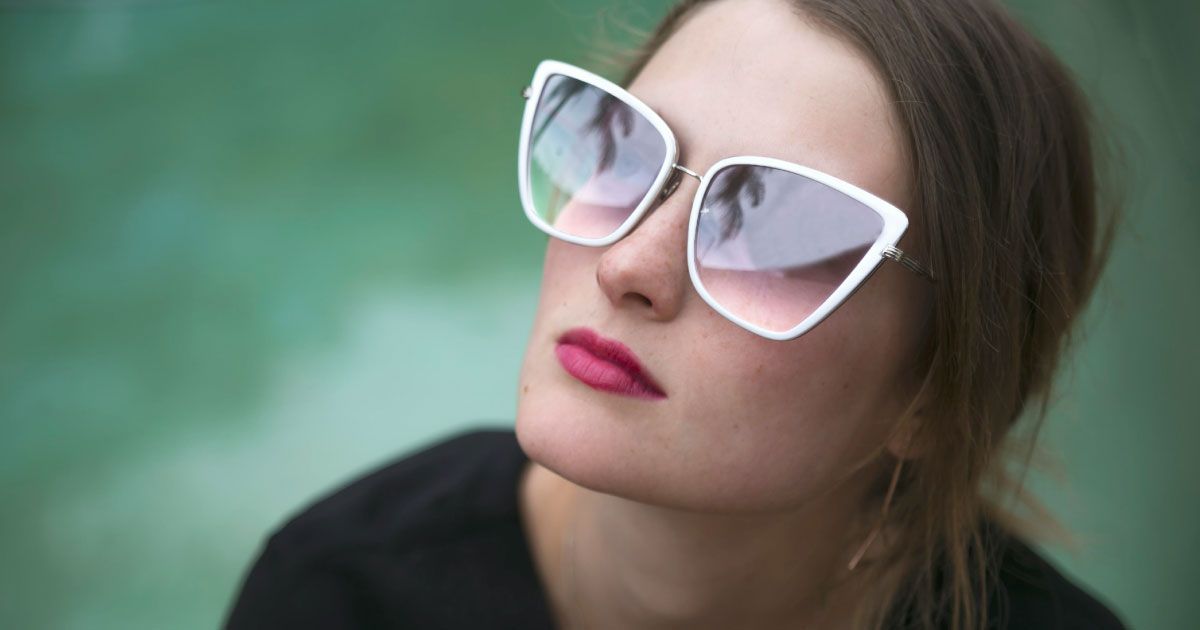The Art of Fading: Gradient Lenses Explained

Read time: 5 minutes
Have you ever seen glasses with lenses that gradually change from dark to light? These are called gradient lenses. Whether you're looking for style, sun protection, or both, gradient lenses can be a great choice. They offer a unique look that many people love.
Gradient lenses are not just for fashion. They also have practical benefits. The darker part of the lens can protect your eyes from the sun while the lighter part makes it easy to see your surroundings. This makes them perfect for activities like driving or walking in and out of buildings.
Picking the right gradient lenses for your face and style can be fun. With so many options, you're sure to find something that suits you. Now, let’s dive into the world of gradient lenses and explore why they might be the perfect addition to your eyewear collection.
What Are Gradient Lenses?
Gradient lenses are specialty lenses designed to offer a blend of style and function. These lenses gradually change from a darker shade at the top to a lighter one at the bottom. This unique design allows wearers to get the best of both worlds—sun protection and clear vision.
There are two main types of gradient lenses: single gradient and double gradient. Single gradient lenses are dark at the top and light at the bottom. They are ideal for outdoor reading and driving. Double gradient lenses are dark at the top and bottom, with a lighter band across the middle. These are especially useful for activities near water or sand, where light reflects from below.
Benefits of Gradient Lenses
Gradient lenses are not just stylish; they are also very functional. Below are the key benefits that these lenses offer:
Stylish Appearance and Versatility:
- Fashionable Look: Gradient lenses give a sophisticated look that can enhance any outfit.
- Versatile Use: They are suitable for both indoor and outdoor activities, making them a versatile eyewear option.
Practical Benefits:
- Sun Protection: The darker upper part of the lenses provides excellent sun protection, making them great for driving and other outdoor activities.
- Clearer Vision: The lighter lower part allows easy reading and viewing of objects close to you, reducing the need to switch eyewear frequently.
By combining style and practicality, gradient lenses provide a comfortable and elegant solution for eyewear needs.
Choosing the Right Gradient Lenses for Your Style
Finding the perfect pair of gradient lenses can be fun and easy when you know what to look for. Here are some tips to help you match gradient lenses with your face shape and skin tone:
Face Shape:
- Round Faces: Go for angular or rectangular frames to add definition.
- Square Faces: Opt for round or oval frames to soften the angles.
- Oval Faces: Most frame styles look good, so feel free to experiment.
- Heart-Shaped Faces: Pick frames that are wider at the top to balance your features.
Skin Tone:
- Warm Skin Tones: Choose frames in gold, brown, or warm shades.
- Cool Skin Tones: Go for frames in silver, blue, or cool shades.
Popular Frame Styles That Complement Gradient Lenses:
- Aviators: Classic and versatile, they look great on almost anyone.
- Wayfarers: Timeless and trendy, these frames suit many face shapes.
- Cat-Eye Frames: Perfect for a retro look, ideal for adding glamour to your style.
With these tips, finding gradient lenses that enhance your look and match your style becomes simple and enjoyable.
Caring for Your Gradient Lenses
Proper care will keep your gradient lenses looking great and lasting longer. Here are some essential tips to follow:
Cleaning and Maintenance Tips:
- Use A Microfiber Cloth: Always clean your lenses with a soft, microfiber cloth to avoid scratches.
- Lens Cleaner: Use a gentle lens cleaner rather than household cleaners that can damage the coating.
- Rinse with Water: Before wiping, rinse your lenses under lukewarm water to remove any grit.
Common Mistakes to Avoid for Lens Longevity:
Avoid Touching the Lenses: Handle your glasses by the frame to keep smudges and oils at bay.
Keep Them in a Case: Store your glasses in a protective case when not in use to prevent damage.
Don’t Place Them Face Down: Always set your glasses with the lenses facing up to avoid scratches.
By following these simple tips, you can extend the life of your gradient lenses and keep them looking their best.
The Takeaway
Gradient lenses offer a perfect blend of style and functionality. They enhance your appearance while providing sun protection and clear vision. From choosing the right style to proper care, gradient lenses can be a valuable addition to your eyewear collection.
For the best gradient lens options and expert advice, visit Urban Optiks Optometry in San Diego. Schedule an appointment today to explore our wide range of the best luxury sunglasses. Your perfect pair awaits!
Share this blog post on social or with a friend:
The information provided in this article is intended for general knowledge and educational purposes only and should not be construed as medical advice. It is strongly recommended to consult with an eye care professional for personalized recommendations and guidance regarding your individual needs and eye health concerns.
All of Urban Optiks Optometry's blog posts and articles contain information carefully curated from openly sourced materials available in the public domain. We strive to ensure the accuracy and relevance of the information provided. For a comprehensive understanding of our practices and to read our full disclosure statement, please click here.


















